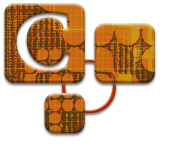|
 Topic
C8: How To Promote Learning Of The New Terms Topic
C8: How To Promote Learning Of The New Terms
Introduction
What is learning?
How can students
obtain the meaning of new terms?
How can students
retain the meaning of new terms?
How can students
learn to use the meaning of new terms?
How to develop
extended vocabulary cards.
How can the senses
promote the learning and retention of a new term?
Teaching Suggestions
What is learning?
Learning is the ability to obtain,
retain and use new information.
In order to understand the ability called learning,
the classification and identifying characteristic of the term "learning" will
be defined.
Ability -
able to do the activities to successfully do a task
Obtain -
acquire by a planned activity to gain possession
Retain -
keep the new information in mind for future use
Use -
put the new information into use to solve a problem
In order to promote the learning ability of the
new terms introduced in your course and recognize examples of them,
the students must be shown how to obtain, retain and use the new terms.
How can students obtain the meaning of the
new terms?
The meaning of a new term is obtained by using
a planned activity to acquire the definition of the new terms introduced.
The students should be encouraged to use the following
five steps to obtain the meaning of the new terms introduced in your
course:
- Recognize when a new term is being introduced
in the course.
- Identify the classification and identifying characteristics(s)
of the new term.
- Look up and learn the meaning of any unknown
term used in a term's definition.
- Make a definition outline of the new terms on
index cards.
- Include on the definition outline examples of
the new term.
How can students retain the meaning of the
new terms?
Retention of new information only takes place
by frequent review of the information. The best way to frequently
review information is making a definition outline of the new terms
on index cards. Using index cards to review the definition
of the new terms introduced in the course has the following advantages:
- Easy to review frequently -
learning curve requires frequent review.
- Quickly review -
only a short period of time is needed to review.
- Organized system of review -
retrieval from memory is added by having terms arranged in some logical
grouping.
- Random order of learning -
needed to prevent serial position effect.
- Review only the terms not learned -
test oneself to determine which terms are learned.
- Predict test questions while reviewing -
test preparation is promoted by having the information on the
index similar to the way it will be asked on a test.
- Recitation -
When predicting test questions, give the answer to the question you
made up out loud. This promotes learning for the following three
reasons:
- When you know you are going to
recite something, you pay more attention to what you
are learning.
- You get immediate feedback on
how well you know the information.
- When you hear something, the information
is processed in a different part of the brain.
- Confidence -
by testing oneself while reviewing, the terms can be reviewed
until learned.
How can students learn to use the meaning
of the new terms?
By having students use the new terms, they learn
to make associations or connections of the new term to information
already stored in their mind.
By making associations or connections of the new
term to known information, the new term is learned and remembered.
This is because the new term is connected to something already known
and stored in memory.
The more and better associations the students can
make between the term's classification and identifying characteristic(s),
the better the term becomes fixed or encoded in their minds and is
available to be used.
The following ways can be used to create associations
between the term's classification and identifying characteristic(s)
and known information.
Each of these four ways requires the new information
to be used:
- Create study groups or learning communities
- Have class discussions between students
- Assign articles to be read that contain the new
terms
- Develop an extended vocabulary card for new terms
Directions will now be given on how to develop
an extended vocabulary card.
How to
Develop an Extended Vocabulary Card:
|
Recommend
to the students that they should make an extended vocabulary
cards to learn the new terms introduced in the course. An
extended vocabulary card purpose is to connect the new term to
information already stored in the mind.
Terms that are required to be learned can be connected
to past, present and future uses of the term. This can
be done by asking the students to use the following six questions:
|
1. Situation...
|
Where will the term be used? |
| 2. Who... |
Who will use the term? |
| 3. Experience... |
What experiences will I have using the term? |
| 4. Beliefs... |
What beliefs or attitudes are created by the
term? |
| 5. Emotions... |
Are any emotions created by the term? |
| 6. Senses... |
What senses can be associated with the term's
classification and identifying characteristic(s)? |
 
TOP
|